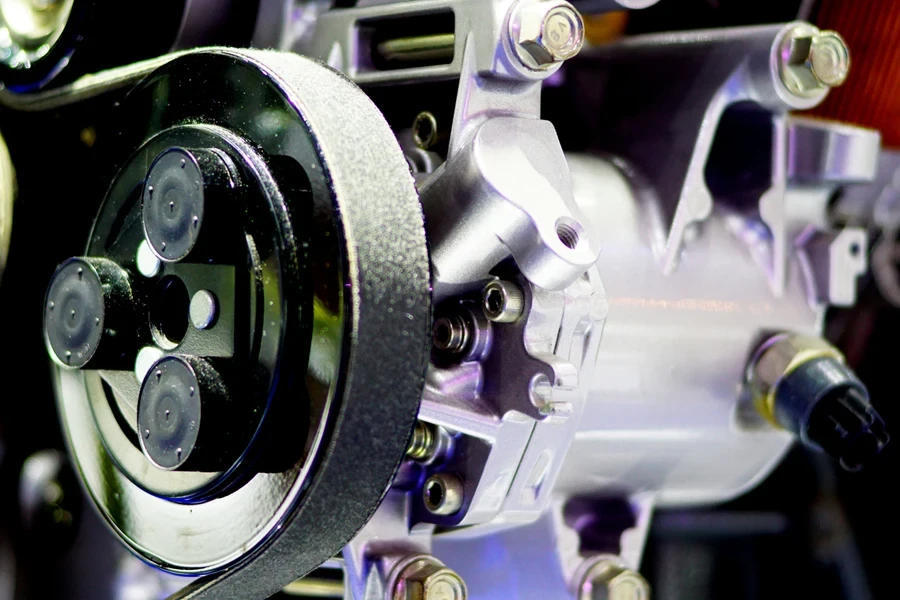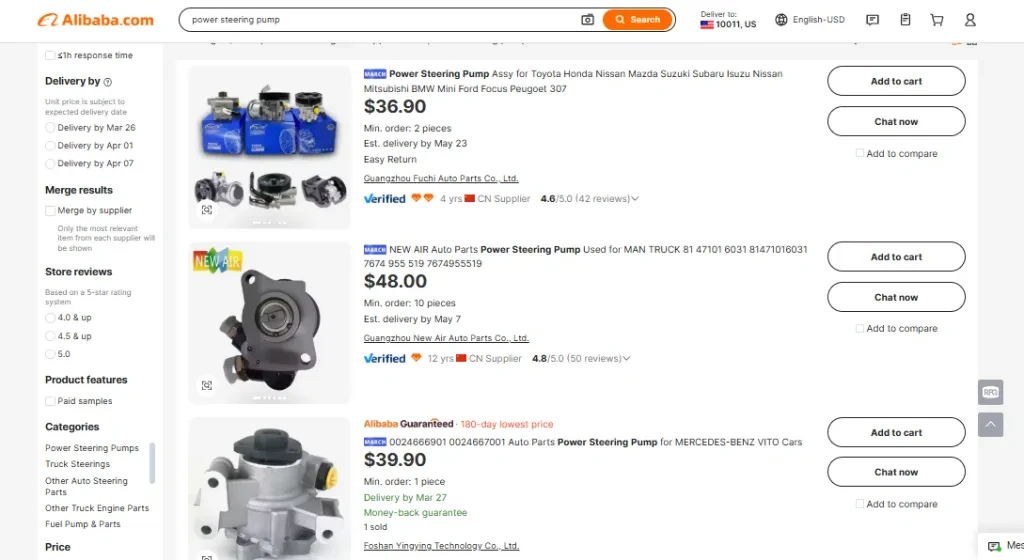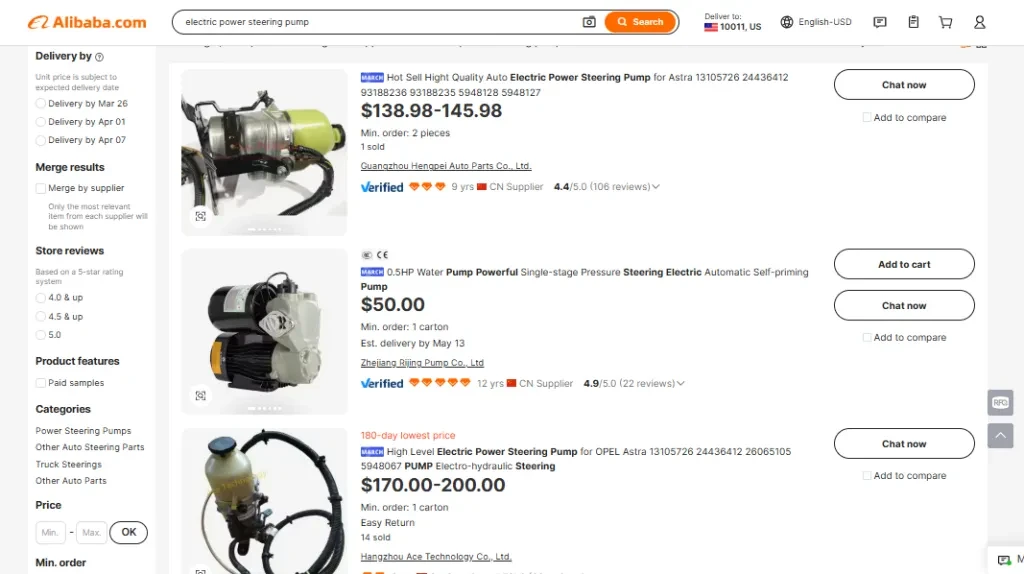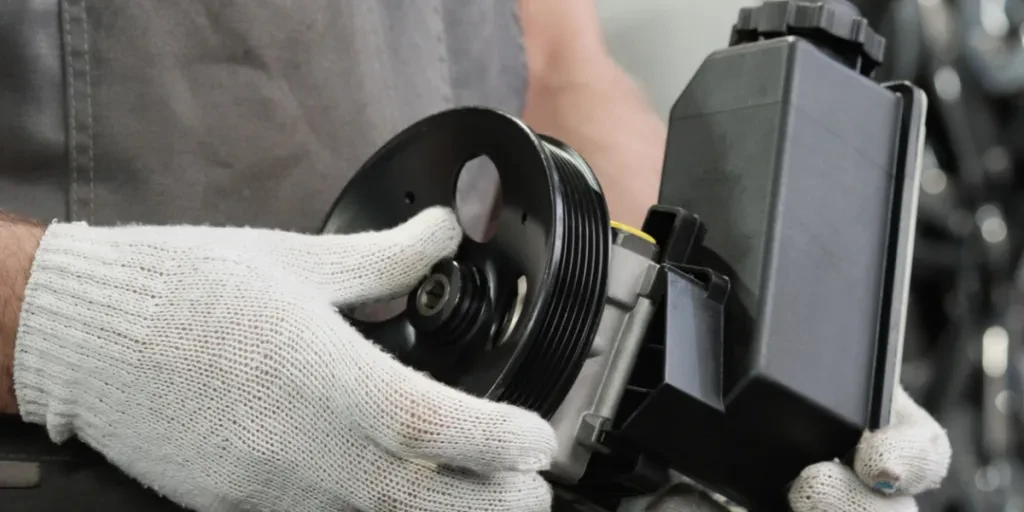Steering in modern cars is mostly effortless now, and for that we have power steering pumps to thank. These pumps use hydraulic pressure or motors to amplify the steering force, allowing drivers to maneuver their cars with minimal effort.
Additionally, the pump is a high-stakes component since it plays a crucial role. When it fails, it can be both annoying and pose a serious safety concern – an opportunity for auto parts dealers to step in and do their work.
However, retailers shouldn’t just jump into the market. Before stocking, you must understand what to look for in a power steering pump replacement – exactly what we’re here to help you do.
Table of Contents
An overview of how steering pumps work
Stocking power steering pump replacements
1. Consider vehicle compatibility and fit
2. OEM vs. aftermarket
3. Belt-driven vs. electric power steering pumps
4. Ease of installation
Maintenance tips for customers
Tips to help guide customer conversations
1. Confirming the diagnosis
2. Discussing the options
3. Talking about installation
4. Underlining the big picture
Rounding up
An overview of how steering pumps operate
Even if you’re not a mechanic, having a general idea of how power steering pumps work can be a big help when chatting with customers. In short, a small belt attached to the engine’s pulley system spins the power steering pump, pressurizing fluid and sending it to the steering gear. Some newer power steering pumps rely on electric motors and sensors instead, but the idea is the same.

Whenever the driver turns the steering wheel, that pressurized fluid/motor helps push the wheels in the desired direction. If a driver encounters a “groaning” sound while steering, it could mean that there’s a clog or a leak somewhere, or that the pump itself is starting to break down.
Note: Explaining the basics in simple, approachable language often reassures customers that they’ve come to the right place when it comes to car fixes.
Stocking power steering pump replacements
1. Consider vehicle compatibility and fit

Power steering pumps aren’t one size fits all, so it’s better to stock various options to match popular vehicle makes, models, and years. Businesses must also be precise when it comes to their compatibility guides or catalogs. These provide the best way for customers to choose what they need while helping you to avoid costly returns and disappointed customers.
Note: A consumers’ vehicle specs will influence which pump they choose, as different car makes and models feature specific requirements that affect performance and compatibility.
2. OEM vs. aftermarket

The next consideration for auto parts retailers is whether to sell original equipment manufacturer (OEM) parts or aftermarket replacements. OEM pumps are typically more reliable than aftermarket options. However, the trade-off is the price, which can be high for these original parts.
On the other hand, aftermarket pumps can offer significant margins and competitive pricing, but the quality is not always 100%. Retailers offering aftermarket replacement pumps should only work with trusted brands that guarantee consistent quality and performance.
3. Belt-driven vs. electric power steering pumps

Belt-driven pumps rely on mechanical power supplied by the car’s engine through an accessory or serpentine belt. While the engine is running, the belt spins the pump pulley, pressurizing the hydraulic fluid and providing steering assistance.
Pros of belt-driven power steering pumps
- Cost-effective: Belt-driven power steering pumps are easier to make, and so tend to be more affordable. They are also commonly found in many popular vehicles.
- Great at high RPMs: These pumps can easily handle high engine RPMs, giving drivers enough hydraulic pressure to help with steering – even when driving fast
- Proven technology: Belt-driven power steering pumps have been the go-to choice for decades. Many consumers prefer their proven record of reliability.
Cons of belt-driven power steering pumps
- Parasitic loss: Since the engine supplies the mechanical power, some fuel efficiency may be lost due to a small amount of parasitic drag
- Limited control: The pump’s ability to assist drivers depends on the engine’s RPM. For this reason, users may note a less precise or adjustable steering feel.

On the other hand, electric power steering (EPS) systems utilize electric motors and sensors to provide steering assistance. They are not mechanically connected to the engine but draw power from the vehicle’s electrical system, which means they offer more consistent steering assistance regardless of engine RPM.
Pros of electric power steering pumps
- Fuel efficiency: Electric power steering pumps use energy only when needed, making them incredibly efficient. Plus, they eliminate the engine drag problem with belt-driven options.
- Adjustable steering feel: Electric systems are more flexible when it comes to adjusting the steering feel. They allow drivers to customize them according to their preferences or driving conditions.
- Simplified design: Electric power steering pumps have few moving parts, meaning consumers will require less maintenance and may enjoy a longer lifespan
Cons of electric power steering pumps
- Initial cost: Electric power steering pumps offer many benefits, but tend to be more expensive, especially during installation
- Electronics reliance: These pumps feature the one flaw every electric system has: reliance on electronics. This is a con because electrical components can malfunction or fail, affecting the power steering assistance.
- Limited performance at low RPMs: Electric systems may not provide significant assistance at low engine RPMs, requiring drivers to exert more effort when parking or performing slow maneuvers
So, which system should the customer buy: a belt-driven or an electric power steering pump? Which is better? The answer is that the best option will depend on vehicle design, driver preferences, and budget considerations.
Belt-driven power steering pumps are more appealing to regular drivers as they are cost-effective and offer impressive reliability. In contrast, electric power steering pumps have become more popular in modern vehicles. They also attract individuals seeking improved fuel efficiency and adjustable steering.
4. Ease of installation
While power steering pumps are an important part of any vehicle, the replacement process doesn’t have to be complex. Retailers should consider stocking fully assembled pumps, including the pulley and the reservoir (if possible). Another effective approach is to provide clear installation instructions or videos from the manufacturer.
Maintenance tips for customers

Even the best pump won’t last forever, but regular upkeep will help to extend its life and prevent headaches down the road. Customers often need to change their pumps because they neglected their fluid levels or used the wrong type originally.
To help them avoid such issues, here are a few quick tips to offer those with belt-driven pumps (electric models don’t require much maintenance):
- Check fluid regularly: Old fluid in belt-drive pumps can break down, lose its lubricating properties, and cause extra wear. Encourage consumers to inspect their power steering fluid during routine oil changes, especially in older vehicles.
- Keep an eye on belts and tension: A slipping belt in belt-driven models can seem like a failing pump since the pulley likely won’t spin fast enough to generate proper pressure. When swapping a pump, it is also a good opportunity to inspect or replace the belt.
- Flush the system periodically: Contaminants can build up over time, so flushing the old fluid and adding fresh fluid is an excellent way for consumers to keep internal parts cleaner. This is especially true for vehicles that have accumulated many miles.
Finally, if a customer hesitates to upgrade to new fluid or a new belt, remind them that installing a new pump with old fluid or a worn-out belt may shorten its life.
Tips to help guide customer conversations

If a customer walks in and says, “My mechanic told me I need a new pump. I have no idea what that means,” it’s a retailer’s time to shine. You can help them by explaining the following:
1. Confirm the diagnosis
Suggest they check whether the mechanic confirmed a leak, tested belt tension, or considered a fluid flush. This shows you’re not just pushing a product but also ensuring you have the right solution.
2. Discuss the options
If retailers carry multiple brands, let consumers know the difference. For example, brand A may have a more extended warranty, but brand B is cheaper. If you only stock one brand, be upfront about what sets it apart, like its popularity for reliability or easy installation.
3. Talk about installation
Some drivers may attempt to install power steering pumps themselves, but it can be a fiddly task. For novices, mention that they might need specialty tools (like a pulley remover) or that professional assistance can save time and frustration.
4. Underline the big picture
Replacing a pump often goes hand in hand with ensuring the rest of the steering system is in working order. If the hoses, reservoirs, or steering gear are also on their last legs, missing the opportunity to change them could lead to more issues. Introduce all relevant items from your inventory that could help consumers complete the job correctly.
Rounding up
Power steering pumps can be the difference between a harrowing, uncomfortable drive and a smooth one. All car parts are prone to failure, so it’s best to stock a range of brands and models so that you have the correct item when the time comes for customers to replace them. That’s why offering the right pump – and back a sale with clear, confident advice – can turn a concerned driver into a loyal, satisfied customer.




